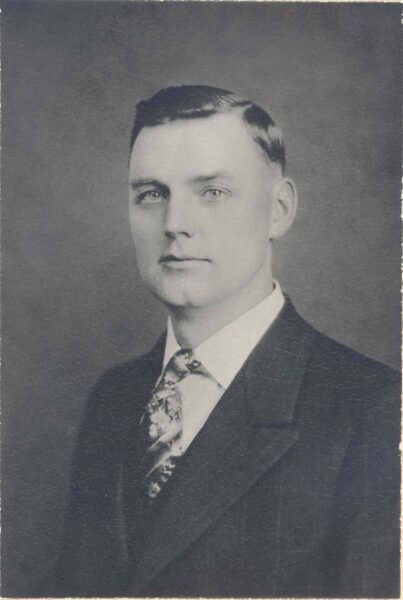
Does MPHS have photographs: Yes
Address in Mount Prospect: 21 S. Maple
Birth Date: November 28, 1889
Death Date: 1965
Marriage
Date: December 30, 1911
Spouse: Ida Deeke
Children: 2 Daughters, Vanetta Winkelman Pearson (she had two husbands) and Elvira Grotheer
Interesting information on life, career, accomplishments:
Herman Meyn, was Mount Prospect’s second mayor. He was the son of Mount Prospect’s first Blacksmith, John Meyn. Herman Meyn was also trained as a blacksmith and began working as a blacksmith in 1914. He bought his own business in 1924 and still had an active foundry business when he became mayor. Changing with the times, he later expanded his business to include farm implements and eventually lawn movers.
Herman Meyn was one of the first people born in Mount Prospect. When he was born, the town was only what we think of as downtown. There were only three shops in town and with his six brothers and sisters, his family made up a large percentage of the town’s population.
He was involved with many aspects of the community. He was a charter member of the Mount Prospect Volunteer Fire Department and served on the force for many years. He was the fourth Fire Chief in Mount Prospect, holding that position for nine years, or from 1922 until he became Mayor. Even with the added responsibility of being the head of the Village Board, he remained active in the Fire Department throughout his term, putting in a total of 17 years on the force.
Soon after Herman Meyn became Mayor of Mount Prospect, the U.S. economy went into its longest and most severe recession, the Great Depression. Meyn stayed as the Mayor through the entire crisis. In that time Mount Prospect became known as one of the most responsibly run communities in Illinois. It was one of very few communities in the area that remained solvent throughout the 1930s. Meyn was even able to make some civic improvements during these difficult times. In 1935 he oversaw a water reservoir to better serve the community needs.